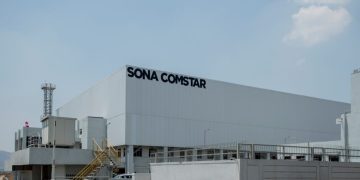Commercial vehicles are the backbone of many industries, transporting goods and people across the world. However, these vehicles also face various challenges, such as increasing complexity, stricter emissions regulations, and higher customer expectations. To keep up with these demands, commercial vehicle repair and maintenance need to be fast, accurate, and cost-effective. This is where diagnostic tools come in handy, as they help technicians to identify and fix problems in the vehicle’s electronic and software systems.
Diagnostic tools have evolved significantly over the years, from relying on service manuals and blink codes to using sophisticated computerised devices that can access and analyse data from multiple electronic control units (ECUs). These tools can also perform advanced procedures, such as reprogramming, calibration, and configuration of the vehicle’s systems. However, the conventional diagnostic tools have some limitations, such as:
l They require physical access to the vehicle’s OBD-II port, which may not be always available or convenient.
l They depend on the availability and quality of the diagnostic data and software provided by the vehicle manufacturers, which may not be updated or compatible with the latest technologies and standards.
l They are often expensive and require specialised training and skills to operate and interpret the results.
To overcome these challenges, the automotive industry is witnessing some exciting advancements in diagnostic tools, such as:
- Remote diagnostics: This technology allows technicians to diagnose and repair vehicles remotely, without the need to be near the vehicle. This can be done through telematics, which is the integration of telecommunications and informatics. Telematics enables the transmission of diagnostic data and commands between the vehicle and a remote server, using wireless networks and protocols, such as cellular,
Wi-Fi, Bluetooth, or MQTT. Remote diagnostics can offer several benefits, such as:
l Reducing vehicle downtime and repair costs, as problems can be detected and fixed before they become serious or cause damage to the vehicle.
l Improving customer satisfaction and loyalty, as the vehicle’s performance and health can be monitored and optimised in real-time, and the service quality and transparency can be enhanced.
l Enabling predictive maintenance, which is the use of artificial intelligence and machine learning to analyse the vehicle’s data and predict future failures or maintenance needs, and take preventive actions accordingly.
One example of remote diagnostics is Jaltest Telematics, which is the first of its kind, allowing technicians to perform remote diagnostics and predictive maintenance while the vehicle is on the road.
- Augmented reality: This technology enhances the perception of reality by overlaying digital information and images on the physical environment, using devices such as smartphones, tablets, or smart glasses. Augmented reality can be used to assist technicians in the diagnosis and repair process, by providing them with:
l Visual guidance and instructions, such as showing the location of the OBD-II port, the wiring diagram, or the repair procedure, on the device’s screen or the technician’s field of view.
l Interactive feedback and support, such as allowing the technician to scan a QR code or a barcode on the vehicle or the part, and get relevant information or tips, or to contact an expert or a colleague for assistance, using voice or video calls.
l Enhanced learning and training, such as enabling the technician to practice and test their skills and knowledge, using simulations or gamification, or to access online courses or tutorials, using the device’s browser or apps.

One example of augmented reality is Bosch Common Augmented Reality Platform (CAP), which is a software solution that enables the creation and delivery of augmented reality content for various applications, including vehicle diagnostics. It allows technicians to access interactive and contextual information, such as 3D animations, videos, or documents, using their mobile devices or smart glasses. These advancements in diagnostic tools are transforming the way commercial vehicle repair and maintenance are performed, making them more efficient, effective, and enjoyable. However, these technologies also pose some challenges, such as:
l The need for reliable and secure data transmission and storage, as remote diagnostics and augmented reality involve the exchange of sensitive and confidential information between the vehicle and the remote server or the device, which may be vulnerable to cyber-attacks or data breaches.
l The need for standardisation and interoperability, as remote diagnostics and augmented reality require the compatibility and integration of various hardware and software components, such as the vehicle’s ECUs, the diagnostic tool, the telematics device, the network, the protocol, the platform, the application, and the content, which may be developed and provided by different manufacturers and vendors.
l The need for regulation and compliance, as remote diagnostics and augmented reality may have legal and ethical implications, such as the ownership and usage of the vehicle’s data, the liability and responsibility for the diagnosis and repair outcomes, the privacy and consent of the vehicle owner and driver, and the safety and quality of the service.
These challenges need to be addressed by the stakeholders involved in the development and deployment of these technologies, such as the vehicle manufacturers, the diagnostic tool providers, the telematics service providers, the network operators, the content creators, the technicians, and the customers, through collaboration, innovation, and regulation.
In conclusion, diagnostic tools are essential for the commercial vehicle industry, as they help to ensure the optimal performance and safety of the vehicles, and the satisfaction and loyalty of the customers. The advancements in diagnostic tools, such as remote diagnostics and augmented reality, are creating new opportunities and possibilities for the industry, as well as new challenges and risks. The future of commercial vehicle diagnostics is here and now, and it is up to the industry to embrace it and shape it.
– Filda Francis



























































